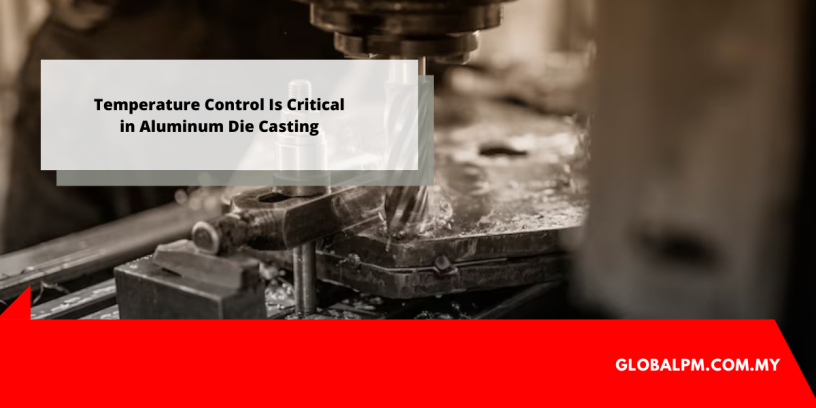Aluminum die casting is an essential manufacturing process for sectors such as automotive and aerospace, but the key to its success is an often-overlooked procedure: temperature management. Maintaining a steady temperature throughout the process is critical for the effective production of high-quality aluminum castings.
To obtain the required product quality, the precision or fluctuation of the molten metal’s temperature must be precisely regulated. Therefore, it is vital to employ suitable methods and technologies to maintain the temperature within the specified range.
This article explores the importance of temperature management, obtaining/maintaining correct temperatures, and the cost and time-saving benefits of proper temperature control in aluminum die casting.
Adequate fluidity of molten aluminum is ensured by proper temperature control.
Maintaining the fluidity of liquid aluminum requires proper temperature regulation.
Due to insufficient heat, the metal may flow unevenly into the mold, resulting in defects or partial fill.
Excessive temperatures might cause a reaction between the metal and the mold, reducing mold life and increasing the likelihood of surface defects.
Porosity is reduced and aluminum die castings are protected.
Temperature management is critical in reducing porosity in the final cast product. When gas bubbles become stuck in the solidifying metal, they create microscopic gaps in the completed product.
By keeping the temperature constant throughout the process, you can limit the formation of gas bubbles and assure a more solid, uniform item.
Temperature Optimization Improves Dimensional Accuracy
As they cool and harden, aluminum components tend to shrink. The rate of shrinkage can be influenced by the temperature of the molten metal as well as the process of cooling within the mold.
You may reduce shrinkage and increase the dimensional accuracy of the finished product by regulating the temperature.
Ensures a Smoother Surface Finish
Controlling temperature is also essential for getting a high-quality surface finish on your cast aluminum items.
If the molten aluminum temperature is not stable, it can cause surface defects such as cold shuts, which occur when two fronts of molten metal contact but do not fuse together effectively.
You may reduce these faults and obtain a better surface finish by keeping a constant temperature.
Mold Life Extension
Mold life is an important consideration in the cost-effectiveness of the die-casting process. Because of the high temperatures and pressures involved, the molds used in aluminum die casting are prone to wear and strain.
By carefully managing the temperature of the molten aluminum and the mold, you may decrease stress on the mold and extend its life, thus saving time and money.
Best Methods for Maintaining Adequate Temperature Control
- Temperature Control Automation
Temperature control automation in aluminum die casting is a vital step in assuring product quality.
This assures that the product is consistent and dependable, with low waste, faults, and rework. Automation also provides for faster and more efficient manufacturing, as well as lower energy use.
Furthermore, automatic temperature management reduces the need for frequent changes from an operator and provides for improved temperature precision and reproducibility. The outcome is enhanced safety and product quality, along with decreased manufacturing time and expense.
Temperature control is a crucial aspect of the manufacturing process in aluminum die casting, and automation of this process has transformed the industry.
- Improving Precision
The use of temperature controllers, which monitor and manage the temperature of the molten metal, can help to improve casting accuracy.
Temperature controls also enhance injection process control, allowing for more precise pressure settings and improved product design. Temperature control is extremely useful when working with elaborate or intricate patterns since it allows for more exact temperature control of the molten metal.
The advantages of temperature control in aluminum die casting are obvious, since it may aid in achieving precise and consistent outcomes.
- Proper Cooling Systems
When it comes to temperature management in aluminum die casting, cooling systems are critical to the part’s efficiency and overall quality. Precision cooling systems are meant to keep molten aluminum at the right temperature, preventing metals from overheating or cooling too rapidly.
Cooling systems are also employed to keep the die and mold at safe operating temperatures.
This is especially important for delicate die-cast parts and components, where the mold must be cooled in order for the metal to be correctly molded. It is critical to consider the metal’s shrinkage rate throughout the cooling process, as the item will shrink after cooling, which can cause a number of flaws.
These issues may be avoided with proper temperature management in aluminum die casting.
Discover the superior aluminum die casting solutions offered by Global PM, the leading supplier in Malaysia. Contact them now for top-quality products and exceptional service.









